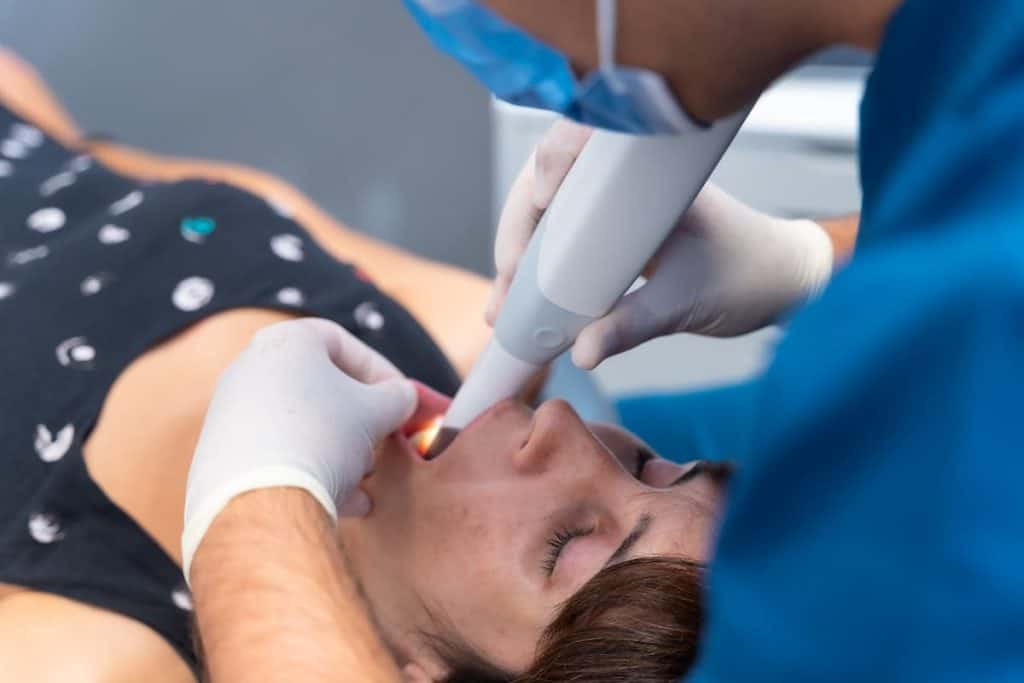Diagnodent
Dental Technology
The Diagnodent is a specialized diagnostic device used in dentistry to detect early-stage cavities that may remain hidden on routine X-rays or during a standard visual check. By relying on laser fluorescence, it evaluates the condition of the teeth and pinpoints areas that might be susceptible to decay.
Diagnodent at Deer Ridge Dental
The Diagnodent is a diagnostic tool used in dentistry to help detect early-stage cavities that may not be visible on traditional X-rays or during a visual examination. It’s a type of laser cavity detection system that uses laser fluorescence to assess the health of teeth and identify areas of decay. This technology is particularly useful for early detection of caries (cavities), allowing dentists to treat decay before it progresses into more severe damage.

How Does the Cavitron Work?
Laser Emission
Fluorescence Detection
Measurement and Scoring
Virtual Display
Early Detection of Cavities
The Diagnodent is particularly useful for detecting early-stage cavities that might not be visible during a visual exam or on standard X-rays. This helps catch cavities before they require more invasive treatments, like fillings, and allows for earlier intervention.
Non-Invasive and Painless
The Diagnodent procedure is completely non-invasive and painless. The laser is harmless, and the process doesn’t require any drilling or poking of the tooth. It is simply a quick scan of the tooth surface.
Accuracy and Precision
The Diagnodent provides a more accurate assessment of decay than traditional visual exams, which can sometimes miss smaller, incipient cavities (early decay). It also helps the dentist differentiate between staining on the tooth surface and actual decay, which can be difficult to do with the naked eye.
Detection in Hidden Areas
The laser can detect decay beneath the surface of the tooth, such as in the fissures or crevices, where cavities often begin but might not be apparent with traditional methods.
No Radiation
Unlike traditional X-rays, which expose patients to a small amount of radiation, the Diagnodent is a radiation-free technology, making it a great option for patients who want to avoid unnecessary X-ray exposure.
Objective Results
The results from the Diagnodent are highly objective and reproducible, meaning they are consistent from one visit to another. This provides a more reliable way to track the progression or regression of cavities over time.
Assists in Preventive Dentistry
By detecting cavities early, the Diagnodent allows for preventive treatment, such as fluoride applications or sealants, which can help remineralize and protect the tooth from further damage. This can help avoid the need for more costly or invasive restorative procedures later on.
Cavities (Carious Lesions)
The primary use of the Diagnodent is to detect cavities, particularly in areas that are hard to examine visually, such as between teeth or in the deep pits and fissures on the chewing surfaces of molars.
Early-Stage Decay
The Diagnodent is especially effective at finding early-stage decay, which often goes unnoticed in routine exams. Early detection allows for minimal treatment (such as fluoride treatments or conservative fillings), which preserves more of the natural tooth structure.
Secondary Decay (Around Existing Fillings)
It can also be used to check for secondary decay or recurrent cavities around existing fillings. Over time, fillings can wear down or develop gaps, leading to decay under the filling.
Enamel Degradation
It can help detect enamel demineralization (early stages of decay), even before cavities fully form. This is useful for promoting early preventive care, like fluoride treatments.
The Diagnodent is typically used in conjunction with other diagnostic tools, such as visual exams and X-rays, to give a comprehensive view of a patient’s oral health. Common situations where the Diagnodent may be used include:
- Routine check-ups: During your regular dental visits to assess the health of your teeth and detect any early signs of cavities.
- High-risk patients: For patients who have a higher risk of developing cavities due to factors like dry mouth, poor oral hygiene, or a history of frequent cavities.
- Monitoring: For patients with existing fillings or restorations to check for any secondary decay or deterioration around the fillings.
- Preventive care: In patients who want to take a proactive approach to maintaining their oral health, the Diagnodent can help monitor enamel health and catch early problems before they progress into cavities.